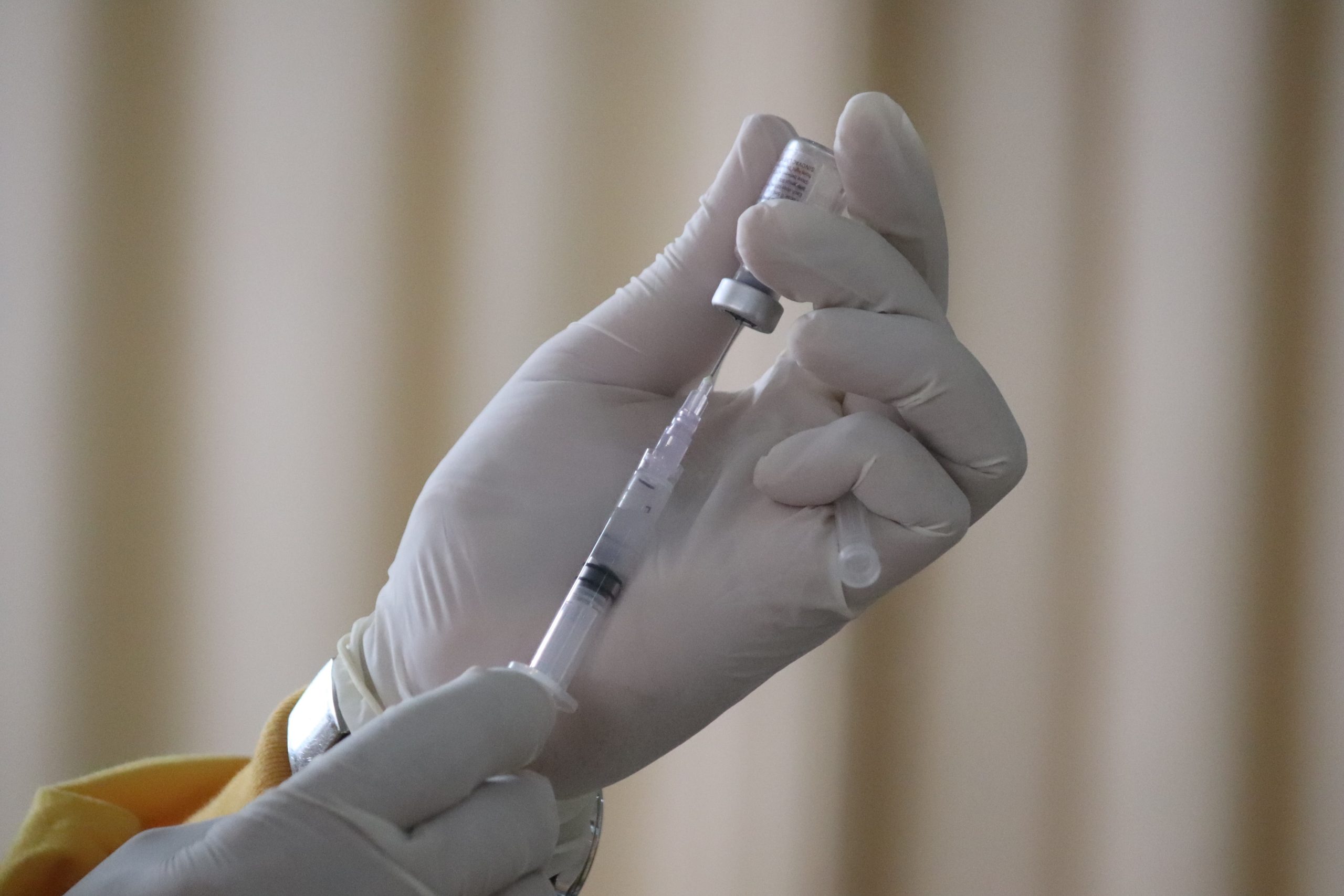health
The Dangerous Consequences of Anti-Vaccine Beliefs on Measles Outbreaks

As vaccination rates continue to decline, measles outbreaks are becoming more common in countries across the globe. Despite overwhelming scientific evidence that vaccines are safe and effective, a growing number of people still believe in anti-vaccine myths, putting themselves and others at risk. In this blog post, we’ll explore the dangerous consequences of anti-vaccine beliefs on measles outbreaks and why it’s important for everyone to get vaccinated for their own health and the well-being of their communities. So buckle up and let’s dive right into it!
The dangers of measles
One of the most dangerous consequences of anti-vaccine beliefs is the reemergence of measles. Measles was declared eliminated in the United States in 2000, but there have been multiple outbreaks in recent years. These outbreaks have primarily been caused by unvaccinated individuals, who put themselves and others at risk for this highly contagious disease.
Measles can be serious, especially for young children. It can cause pneumonia, encephalitis (swelling of the brain), and even death. In pregnant women, it can lead to premature labor, low birth weight, and miscarriage. And because it’s so contagious, an outbreak can quickly spiral out of control if enough people are unvaccinated.
The best way to protect yourself and your community from measles is to get vaccinated. The measles vaccine is safe and effective, and it’s one of the best ways we have to prevent this disease.
The anti-vaccine movement
The anti-vaccine movement has been linked to a number of measles outbreaks in recent years. In 2015, there was a large outbreak of measles in California that began at Disneyland and spread to other parts of the state. The outbreak was traced back to unvaccinated people who had traveled to Disneyland from outside the country.
In 2018, there was a major outbreak of measles in New York City. The outbreak began in an Orthodox Jewish community where many people were not vaccinated because of religious beliefs. The outbreak spread to other parts of the city and eventually to other states.
These outbreaks have led to an increase in cases of measles around the world. Measles is a highly contagious disease that can be deadly, particularly for young children. The World Health Organization has declared that measles is once again a global health threat due to the rise in outbreaks linked to the anti-vaccine movement.
The anti-vaccine movement puts everyone at risk, not just those who choose not to vaccinate themselves or their children. Herd immunity depends on enough people being vaccinated so that the disease cannot spread easily from person to person. When too many people opt out of vaccination, it increases the chances that an outbreak will occur.
The consequences of the anti-vaccine movement are dangerous and potentially deadly. Measles is a preventable disease but we are seeing a rise in cases due to the spread of misinformation about vaccines. It’s important for everyone to be properly
Measles outbreaks in the United States
Since the beginning of 2019, there have been more than 700 reported cases of measles in the United States. This is the largest number of cases since 1994 and is largely attributed to the anti-vaccine movement.
Measles is a highly contagious disease that can be deadly, particularly for young children. It is spread through coughing and sneezing, and can live on surfaces for up to two hours. Symptoms include fever, rash, and runny nose. Measles can also lead to pneumonia and encephalitis (inflammation of the brain).
The best way to protect against measles is to get vaccinated. The MMR (measles, mumps, rubella) vaccine is safe and effective, and protects against all three diseases. However, the anti-vaccine movement has led some people to believe that the MMR vaccine is unsafe. This false belief has contributed to a decline in vaccination rates, which has in turn led to more measles outbreaks.
These outbreaks are costly and disruptive. They strain our healthcare system and put everyone at risk – not just those who are unvaccinated. Measles is preventable, but we can’t take that for granted. We must do everything we can to ensure that as many people as possible are vaccinated against this deadly disease.
The connection between anti-vaccine beliefs and measles outbreaks
The connection between anti-vaccine beliefs and measles outbreaks is a strong one. Measles outbreaks have been on the rise in recent years, and anti-vaccine beliefs have been shown to be a major contributing factor.
A study published in the journal Pediatrics found that areas with higher rates of non-medical exemptions from vaccinations were also more likely to experience measles outbreaks. The study’s authors concluded that “areas with higher exemption rates are at increased risk for measles transmission.”
Another study, this one published in the New England Journal of Medicine, looked at data from 27 countries and found that “areas with lower vaccination coverage were associated with higher risks of measles.” The study’s authors warned that “declines in vaccination coverage may reverse the progress made in controlling measles.”
These studies make it clear that there is a strong connection between anti-vaccine beliefs and measles outbreaks. Measles is a highly contagious disease and it only takes a small number of unvaccinated people to put an entire community at risk.
Anti-vaccine activists often claim that vaccines are unsafe or ineffective, but there is no scientific evidence to support these claims. Vaccines are safe and effective, and they are our best defense against dangerous diseases like measles.
The consequences of anti-vaccine beliefs on measles outbreaks
Measles is one of the most contagious diseases in the world, and it is particularly dangerous for young children. For this reason, vaccines are critical for protecting public health. However, there has been a recent resurgence of measles outbreaks in developed countries such as the United States, Europe, and Australia. These outbreaks have been attributed to a growing anti-vaccine movement.
Anti-vaccine beliefs have consequences beyond just individual choices. Vaccine-preventable illnesses like measles can spread quickly in communities where vaccination rates are low. This puts everyone at risk, especially young children and those with weakened immune systems. Measles can be deadly, and these outbreaks are a stark reminder of the importance of vaccinating our population.
Conclusion
The dangers posed by the anti-vaccine movement have been clearly demonstrated by measles outbreaks throughout the world. These epidemics can be prevented with a high vaccination rate, but they become much more severe when individuals choose to forego vaccinations at their own risk and that of others. It is important for people to educate themselves on the potential risks and make informed decisions about their health as well as that of those around them. Vaccines are one of the most powerful tools in public health, protecting us against deadly diseases and offering hope for better living conditions everywhere.
health
Leading Women’s Health Expert: Best Gynecologist Doctor in Delhi

Introduction
When it comes to women’s health, finding the Best Gynecologist Doctor in Delhi isn’t just about credentials it’s about trust, compassion, and expertise. Delhi, being home to some of India’s top healthcare professionals, has one name that shines brightly in women’s wellness Dr. Rupali Chadha.
She’s more than just a doctor; she’s a guiding light for women seeking holistic, personalized, and advanced gynecological care. Whether it’s regular checkups, maternity support, or managing complex conditions like PCOS, Dr. Chadha’s dedication sets her apart.
Understanding Women’s Health Needs
Women’s health is multifaceted it’s not just about reproduction but also hormonal balance, mental well-being, and preventive care. From adolescence to menopause, every stage requires unique medical attention. Having a reliable gynecologist ensures that women receive consistent care throughout life’s transitions.
Why Choosing the Right Gynecologist Matters?
Choosing the Best Gynecologist Doctor in Delhi can make a world of difference in how a woman experiences healthcare. The right doctor listens, explains, and treats not just the symptoms but the root causes. Women need a safe space to discuss intimate issues, and that’s exactly what Dr. Rupali Chadha provides empathy mixed with clinical excellence.
Meet Dr. Rupali Chadha: The Best Gynecologist Doctor in Delhi
Dr. Rupali Chadha is widely regarded as the Best Gynecologist Doctor in Delhi, known for her blend of medical precision and compassionate care. With years of experience in obstetrics, gynecology, and women’s reproductive health, she’s transformed countless lives.
Her commitment goes beyond treatment she focuses on education, empowerment, and long-term wellness for every patient she meets.
Educational Background and Expertise
Dr. Chadha’s medical journey is rooted in deep academic excellence. Trained at leading institutions and continuously updating her knowledge, she’s equipped with both clinical skills and modern medical insights. Her areas of expertise include:
- High-risk pregnancy management
- Infertility and reproductive health
- Menstrual irregularities
- PCOS and hormonal disorders
- Menopause and post-menopausal care
It’s this combination of experience and empathy that truly defines her as the Best Gynecologist Doctor in Delhi.
Comprehensive Women’s Health Services Offered
Dr. Rupali Chadha offers an extensive range of gynecological services, ensuring every woman finds the support she needs.
1. Routine Check-Ups and Preventive Screenings
Regular checkups are key to maintaining reproductive health. Dr. Chadha focuses on preventive screenings for cervical cancer, breast examinations, and reproductive tract infections — ensuring early detection and treatment.
2. Pregnancy and Maternity Care
For expecting mothers, finding the Best Gynecologist Doctor in Delhi is crucial. Dr. Chadha offers end-to-end maternity care — from prenatal counseling to postnatal recovery — ensuring a healthy journey for both mother and baby.
3. Menstrual Disorders Management
Irregular periods, excessive pain, or abnormal bleeding — Dr. Chadha helps identify underlying causes and tailors treatments to bring hormonal balance and comfort.
4. PCOS and Hormonal Imbalance Treatment
Polycystic Ovary Syndrome (PCOS) affects millions of women, and timely treatment is vital. Dr. Rupali Chadha, known as the Best PCOS Doctor Near Me, provides a holistic approach combining lifestyle guidance, medication, and counseling to restore balance naturally.
Best PCOS Doctor Near Me: Why Dr. Rupali Chadha Stands Out?
Finding a trustworthy PCOS Doctor Near Me can be overwhelming, but Dr. Chadha simplifies this with her patient-first approach. She doesn’t just prescribe medication she understands your lifestyle, stress levels, and emotional well-being. Her customized plans focus on long-term relief, fertility improvement, and overall hormonal harmony.
1. Advanced Facilities and Modern Technology
As the Best Gynecologist Doctor in Delhi, Dr. Chadha’s clinic is equipped with cutting-edge technology for diagnosis and treatment. From 3D ultrasounds to advanced fertility evaluations, she ensures every patient benefits from precision-driven care.
2. Patient-Centric Approach to Women’s Wellness
What truly makes Dr. Chadha special is her human touch. She listens patiently, explains every procedure in simple terms, and never rushes appointments. Women feel heard, respected, and cared for qualities that define the Best Gynecologist in South Delhi.
3. Personalized Treatment Plans for Every Woman
No two women are the same and Dr. Rupali Chadha knows it well. She designs personalized care plans that consider a woman’s age, health background, and lifestyle. Whether you’re seeking fertility assistance, PCOS management, or general wellness, her tailored approach ensures lasting results.
4. Testimonials and Success Stories
Many patients describe Dr. Chadha as a “life-changer.” From resolving years of menstrual pain to helping couples achieve their dream of parenthood, her success stories speak volumes. This unwavering trust is what makes her the Best Gynecologist Doctor in Delhi.
Why Dr. Rupali Chadha is Recognized as the Best Gynecologist Doctor in Delhi?
Her unmatched expertise, state-of-the-art clinic, and heartfelt compassion make her the go-to doctor for thousands of women. Dr. Chadha’s commitment to women’s health has earned her numerous accolades and a loyal patient community across Delhi.
1. Tips for Women to Maintain Reproductive Health
- Schedule regular gynecological checkups.
- Maintain a balanced diet rich in iron and vitamins.
- Exercise regularly to keep hormones balanced.
- Avoid stress it plays a huge role in hormonal health.
- Never ignore irregularities like missed periods or pelvic pain.
2. When to Visit a Gynecologist: Don’t Ignore These Signs?
If you’re experiencing any of the following, it’s time to visit the Best Gynecologist Doctor in Delhi:
- Irregular menstrual cycles
- Persistent abdominal pain
- Difficulty in conceiving
- Unusual discharge or odor
- Sudden weight changes due to hormonal imbalance
Conclusion
Women’s health deserves dedicated care, and Dr. Rupali Chadha ensures exactly that. Her reputation as the Best Gynecologist Doctor in Delhi comes from years of experience, trust, and patient satisfaction. Whether you’re seeking a PCOS Doctor Near Me, fertility help, or general reproductive guidance Dr. Chadha’s expertise can make a life-changing difference.
health
Sour Watermelon Gummies THC: Sweet, Tangy Way to Enjoy Cannabis

Introduction
If you enjoy cannabis but want a tasty, easy-to-use option, Sour Watermelon Gummies with THC might be just what you need. These gummies combine the sharp, tangy flavor of sour watermelon with the relaxing and enjoyable effects of THC. Edible cannabis products like these gummies are becoming popular because they offer a fun and discreet way to consume THC without smoking or vaping. In this article, we will explore what Sour Watermelon Gummies THC are, their benefits, how they work, and tips for safe use.
What Are Sour Watermelon Gummies THC?
Sour Watermelon Gummies THC are chewy, fruit-flavored candies infused with tetrahydrocannabinol (THC), the main psychoactive compound in cannabis. These gummies deliver a controlled dose of THC in each piece, making it easier for users to manage their intake. The sour watermelon taste adds a delicious twist, combining sweetness with a tangy kick that many people love.
How Do THC Gummies Work?
When you eat a THC gummy, your body processes it differently than when you smoke or vape cannabis. The THC is absorbed through the digestive system, and it takes longer to feel the effects—usually between 30 minutes to 2 hours. However, the effects also last longer, often 4 to 8 hours. This makes gummies a good choice for people who want long-lasting relief or enjoyment without the smell or harshness of smoke.
Benefits of Sour Watermelon Gummies THC
There are many benefits to choosing Sour Watermelon Gummies THC. First, they offer a tasty and simple way to consume cannabis without harsh smoke or strong smells. The flavor is fun and refreshing, making it easier for some people to enjoy cannabis. Gummies also provide a consistent dose of THC, which helps users control how much they take. This can make the experience safer and more comfortable. Because they are small and easy to carry, gummies are a convenient option for those who want cannabis on the go or want to avoid smoking in public.
There are several reasons why people choose sour watermelon THC gummies:
- Discreet and Convenient: Gummies look like regular candy, so you can enjoy them anywhere without drawing attention.
- Precise Dosage: Each gummy contains a set amount of THC, helping you control how much you consume.
- No Smoking Required: This option is great for those who dislike smoking or have breathing issues.
- Long-Lasting Effects: Because gummies are digested slowly, their effects last longer compared to other cannabis forms.
- Delicious Flavor: The sour watermelon taste makes taking cannabis enjoyable and fun.
Role of Sour Watermelon Gummies THC

Image by: Yandex.com
Sour Watermelon Gummies THC play an important role in making cannabis more accessible and enjoyable. They offer a way for people to experience cannabis without using traditional methods like smoking. This can attract new users who might be nervous about trying cannabis. Gummies also provide a clear, measured dose, which helps users better understand how cannabis affects them. This role is important for safe and responsible use. Additionally, flavored gummies add variety to the cannabis market, offering something fun and tasty compared to other products.
Who Should Use Sour Watermelon Gummies THC?
These gummies are popular among both recreational users and those who use cannabis for medical reasons. People dealing with pain, anxiety, or insomnia often find gummies helpful because of the steady, long-lasting relief they provide. However, beginners should start with a small dose and wait before taking more to avoid unpleasant effects.
How to Use Sour Watermelon Gummies THC Safely
If you’re new to THC gummies or edibles, it’s important to follow some simple safety tips:
- Start Low, Go Slow: Begin with a low dose, like 5 mg of THC or less, and wait at least two hours before taking more.
- Read Labels: Always check the product packaging for THC content and any other ingredients.
- Store Properly: Keep gummies out of reach of children and pets since they look like regular candy.
- Avoid Mixing: Don’t mix THC gummies with alcohol or other drugs, as this can increase side effects.
- Know the Laws: Make sure cannabis edibles are legal in your area before buying or using them.
Possible Side Effects of THC Gummies
While many people enjoy THC gummies safely, some may experience side effects such as dry mouth, dizziness, or increased heart rate. In rare cases, high doses can cause anxiety or paranoia. If you feel uncomfortable, it’s best to relax in a safe place and stay hydrated. If symptoms persist, seek medical advice.
How to Choose Quality Sour Watermelon Gummies THC
Not all THC gummies are created equal. To find the best product, look for:
- Lab Testing: Choose gummies tested by third-party labs to ensure quality, potency, and safety.
- Clear Labeling: The package should clearly state THC dosage, ingredients, and warnings.
- Reputable Brands: Buy from trusted manufacturers or dispensaries with good customer reviews.
- Natural Ingredients: Avoid gummies with artificial colors or harmful additives.
Where to Buy Sour Watermelon Gummies THC
In places where cannabis is legal, you can find these gummies at licensed dispensaries or online stores. Always buy from authorized sellers to avoid fake or unsafe products. If you live in an area where cannabis is not legal, it is important to follow local laws and avoid unregulated sources.
Conclusion
Sour Watermelon Gummies THC offer a tasty, discreet, and effective way to enjoy the benefits of cannabis. With their sweet and tangy flavor, precise dosing, and long-lasting effects, these gummies are a popular choice for many users. Whether you want relief from pain or just a fun way to relax, sour watermelon THC gummies can be a great option. Remember to start with a low dose, use them responsibly, and always choose high-quality products from trusted sources. This way, you can enjoy the sweet and sour experience safely and confidently.
health
MedBillionaires: Transforming Healthcare Through AI and FinTech

Introduction
In a world where healthcare and finance are closely linked, MedBillionaires™ leads the way in innovation, connecting medical technology with financial intelligence. As a Pre-Public Company™ (PPC™), MedBillionaires™ is changing how MedTech companies are built and scaled, offering a model that has the governance and structure of a public company, but without being listed.
The company’s goal is to create a large, AI-driven Med-FinTech ecosystem that connects every part of the medical supply chain, from production to patient care. This smart system improves efficiency, transparency, and cost-effectiveness, making MedBillionaires™ a game-changer in healthcare technology.
What is MedBillionaires?
MedBillionaires is an innovative platform that combines AI and FinTech to improve both healthcare services and financial solutions for people and organizations. Using advanced technology, MedBillionaires aims to cut costs, improve patient care, and make healthcare finances more efficient.
What makes MedBillionaires special is its mix of medical knowledge and tech innovation. With AI-driven tools, they predict medical needs, offer personalized health plans, and help manage healthcare costs.
At its heart, MedBillionaires is focused on making healthcare smarter, more efficient, and more affordable, while also simplifying financial processes that are usually complicated and unclear.
How AI is Transforming Healthcare at MedBillionaires
Artificial Intelligence (AI) has become one of the most influential technologies in modern healthcare. Its capabilities range from enhancing patient diagnosis to streamlining treatment plans and improving administrative efficiency. MedBillionaires leverages AI in several key ways to transform the healthcare experience:
1. Predictive Analytics for Better Care
AI’s ability to analyze large datasets allows MedBillionaires to offer predictive analytics that can anticipate patient needs. By processing vast amounts of health data, AI can detect patterns and provide insights into potential health risks, enabling early interventions and personalized care. For example, AI algorithms can analyze a patient’s medical history, lifestyle, and genetic information to suggest preventive measures or treatments, minimizing the risk of serious health issues in the future.
2. Improved Diagnostics
AI is helping doctors diagnose conditions faster and with greater accuracy. By integrating AI into diagnostic tools, MedBillionaires makes it easier for healthcare professionals to analyze medical images, lab results, and other diagnostic data. For instance, AI can detect anomalies in radiology scans that might be overlooked by the human eye, providing doctors with valuable second opinions that improve diagnostic accuracy.
3. Remote Monitoring and Telemedicine
With the growing trend of telemedicine, AI plays a critical role in monitoring patients remotely. MedBillionaires has incorporated AI-driven devices that track vital signs, such as heart rate, blood pressure, and glucose levels, allowing healthcare providers to monitor patients without needing them to visit a hospital. AI-powered telemedicine platforms also enable doctors to offer consultations and treatment advice remotely, reducing the need for in-person visits and increasing the accessibility of healthcare services.
4. Personalized Treatment Plans
MedBillionaires utilizes AI to craft personalized treatment plans based on the unique needs of each patient. By considering a range of factors—medical history, lifestyle, genetic predisposition—AI can help design customized plans that increase the likelihood of successful outcomes. Whether it’s medication recommendations, lifestyle changes, or therapy sessions, AI ensures that patients receive tailored treatments that align with their specific conditions.
The Pre-Public Company™ Model
Unlike regular startups, MedBillionaires™ builds private companies to work like publicly traded ones right from the start. This structure helps businesses grow sustainably, attract investors, and stay accountable.
By adding strong governance, transparency, and performance standards early on, MedBillionaires™ sets businesses up for long-term success. The PPC™ model removes common challenges when scaling, making sure every company is “ready for the public” from day one. It’s an innovative approach that blends new ideas with business maturity, changing how MedTech companies grow.
Building the Med-FinTech Ecosystem
At the heart of MedBillionaires™ is a digital platform powered by Artificial Intelligence, designed to improve healthcare financing, logistics, and data management. The platform connects healthcare providers, medical manufacturers, distributors, and financial institutions into one smart system.
Using AI and data analytics, the company makes every part of the medical supply chain more efficient, increasing productivity. This mix of MedTech and FinTech creates a smooth environment where innovation and accessibility come together. Examples include financial automation, secure digital payments, and credit systems for medical suppliers, all of which are changing traditional healthcare business models.
AI: The Core of the Future
Artificial Intelligence is the heart of MedBillionaires™. The company uses AI not just for automation, but to make smart decisions. From AI-powered diagnostics to predicting trends in healthcare financing, MedBillionaires™ integrates machine learning into everything it does.
AI helps improve medical accuracy, predict supply chain issues, and optimize resource use. For hospitals, startups, and investors, this means better insights, lower costs, and better patient outcomes. MedBillionaires™ believes the future of healthcare is all about AI-driven, financially smart systems.
Global Vision, Local Impact
MedBillionaires™ operates globally but also makes a local impact by supporting healthcare innovation in emerging markets. Its business model helps small and mid-sized MedTech companies grow in a sustainable way.
In places like Lahore and Gulberg, where healthcare startups are growing fast, MedBillionaires™ provides a platform for local companies to expand globally. By combining AI, finance, and strong governance, it helps Pakistani MedTech startups compete internationally while staying true to their local roots.
Working with medical innovators and tech companies helps build smarter, data-driven healthcare systems. This mix of AI and Med-FinTech creates a connected ecosystem that benefits both patients and businesses.
The Importance of Digital Presence
In today’s digital era, visibility and communication are crucial. MedBillionaires™ understands this and emphasizes building a strong digital footprint through Instagram, Facebook, and professional networks. These platforms enhance engagement, share thought leadership, and connect investors and innovators.
To explore MedBillionaires™’ ecosystem in more detail, visit their official page (internal link) to learn how AI and FinTech are shaping the future of healthcare.
Collaboration and Industry Influence
Partnerships are key to helping MedBillionaires™ grow. The company works with top MedTech companies, research groups, and financial innovators to strengthen its AI platform.
Forbes Health and HealthTech Magazine say that combining healthcare with AI-based financial technology is one of the fastest-growing industries. This fits perfectly with MedBillionaires™’ mission.
These partnerships aim to make advanced healthcare tech available to more people, not just big companies. Each collaboration helps the company grow in a sustainable way, while ensuring transparency and strong operations.
The Future of MedBillionaires and Healthcare Innovation
The combination of AI and FinTech is changing the way healthcare is delivered, and MedBillionaires is at the forefront of this revolution. As technology continues to advance, we can expect even more innovations in areas such as machine learning, predictive healthcare, and financial automation.
In the near future, AI-powered systems may be able to predict disease outbreaks, personalize treatments with even greater accuracy, and enhance the overall patient experience. Meanwhile, FinTech will continue to drive down costs, making healthcare accessible to a larger portion of the population.
MedBillionaires is also exploring ways to integrate more advanced payment systems, such as cryptocurrencies, and further expand its AI-driven offerings to cover a broader range of healthcare needs. The company’s vision is to create a future where healthcare is not only smarter but also more accessible, transparent, and affordable.
The Road Ahead
As MedBillionaires™ grows, it stays focused on changing how healthcare operates and is financed. By combining AI technology, Med-FinTech systems, and the Pre-Public Company™ framework, the company makes sure its platform is flexible, scalable, and ready for the future.
MedBillionaires™ is not just keeping up with healthcare’s future it’s creating it. With a strong vision, solid leadership, and a focus on technology, the company aims to change the way people experience healthcare innovation.
-
Business2 years ago
Cybersecurity Consulting Company SequelNet Provides Critical IT Support Services to Medical Billing Firm, Medical Optimum
-
Business2 years ago
Team Communication Software Transforms Operations at Finance Innovate
-
Business2 years ago
Project Management Tool Transforms Long Island Business
-
Business2 years ago
How Alleviate Poverty Utilized IPPBX’s All-in-One Solution to Transform Lives in New York City
-
health2 years ago
Breast Cancer: The Imperative Role of Mammograms in Screening and Early Detection
-
Sports2 years ago
Unstoppable Collaboration: D.C.’s Citi Open and Silicon Valley Classic Unite to Propel Women’s Tennis to New Heights
-
Art /Entertainment3 years ago
Embracing Renewal: Sizdabedar Celebrations Unite Iranians in New York’s Eisenhower Park
-
Finance3 years ago
The Benefits of Starting a Side Hustle for Financial Freedom






























